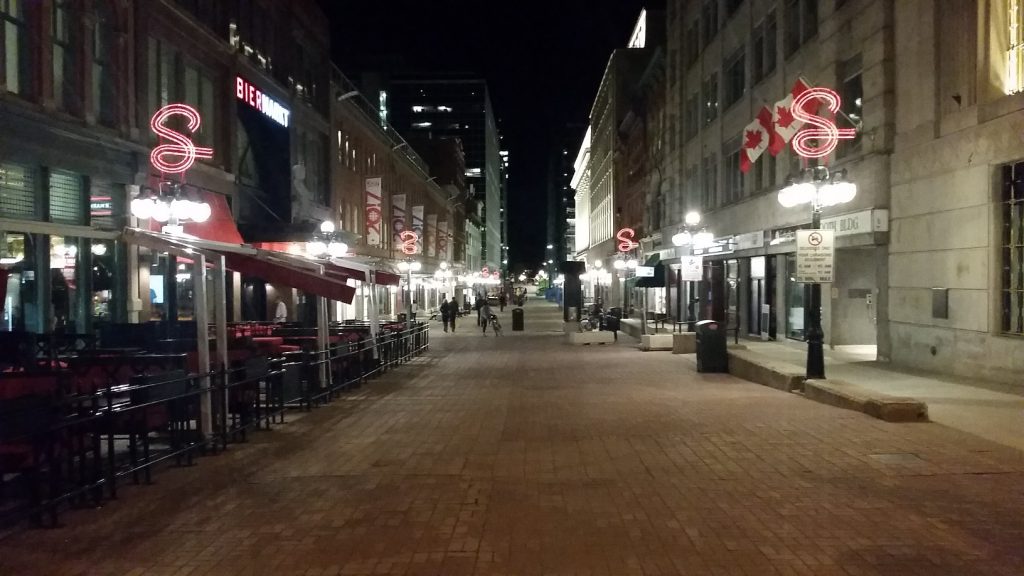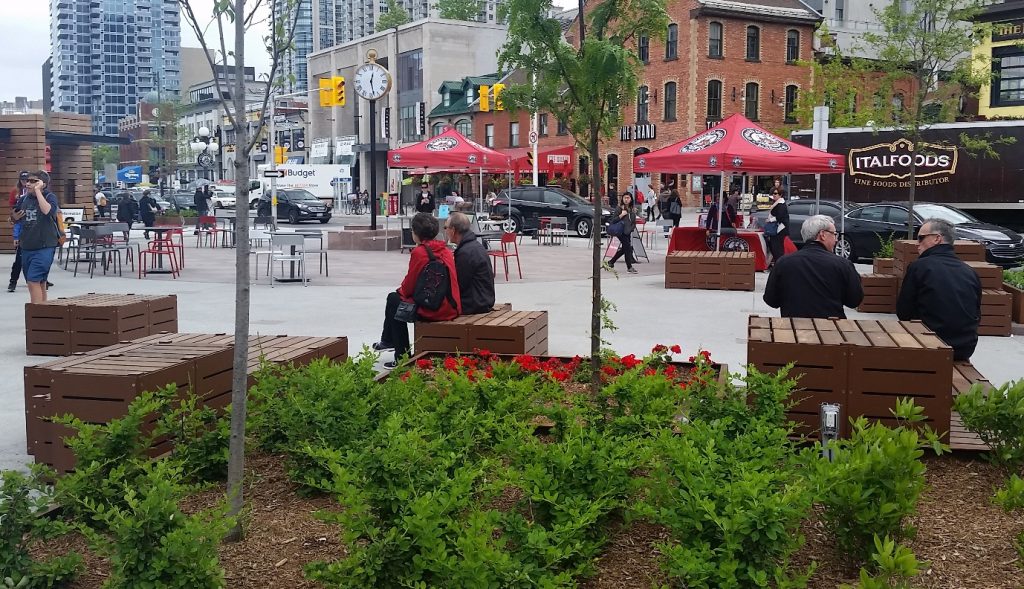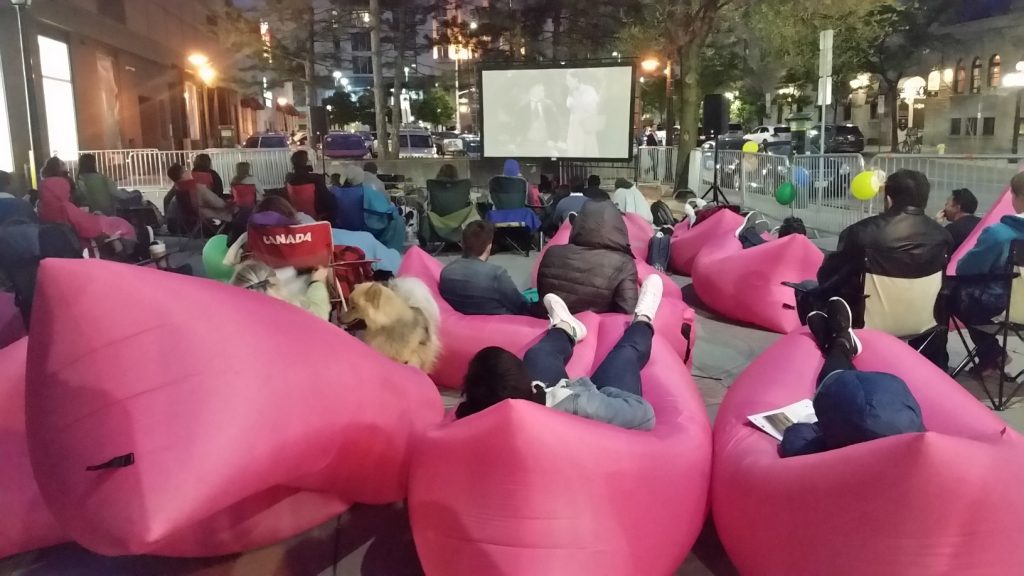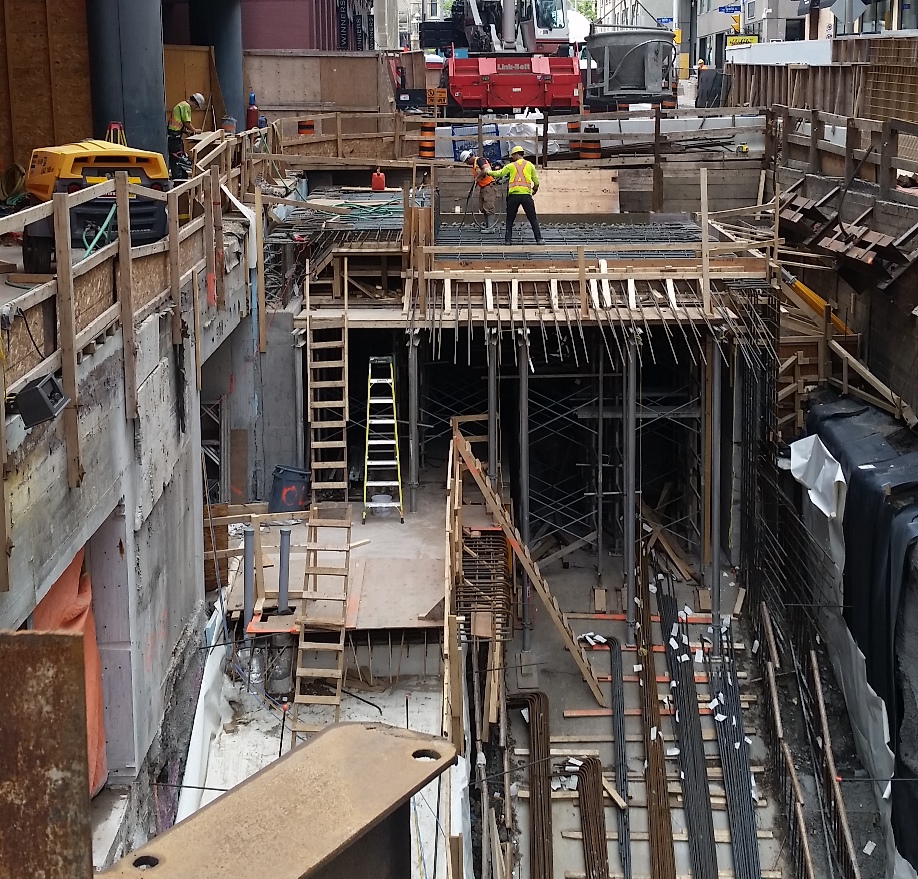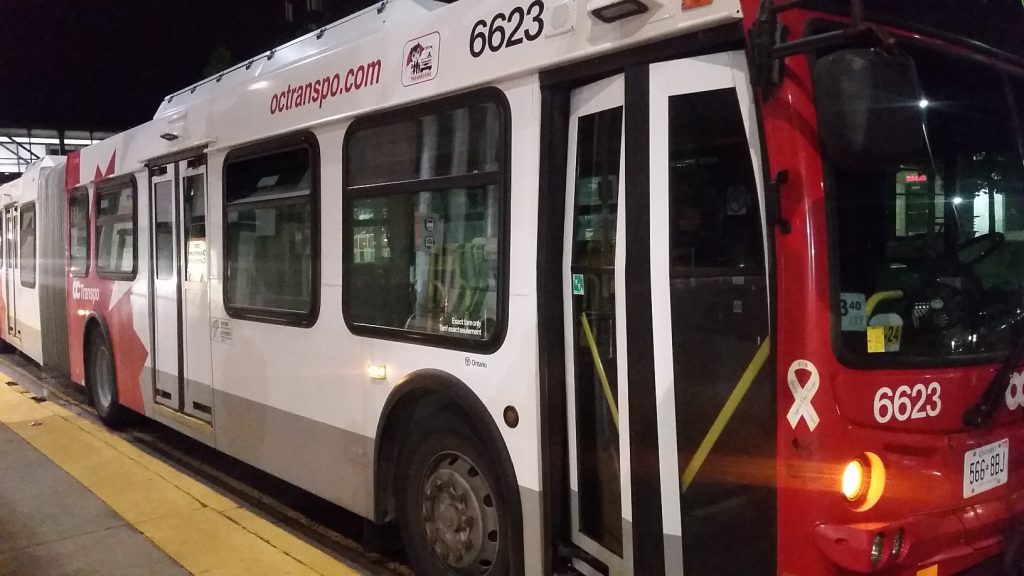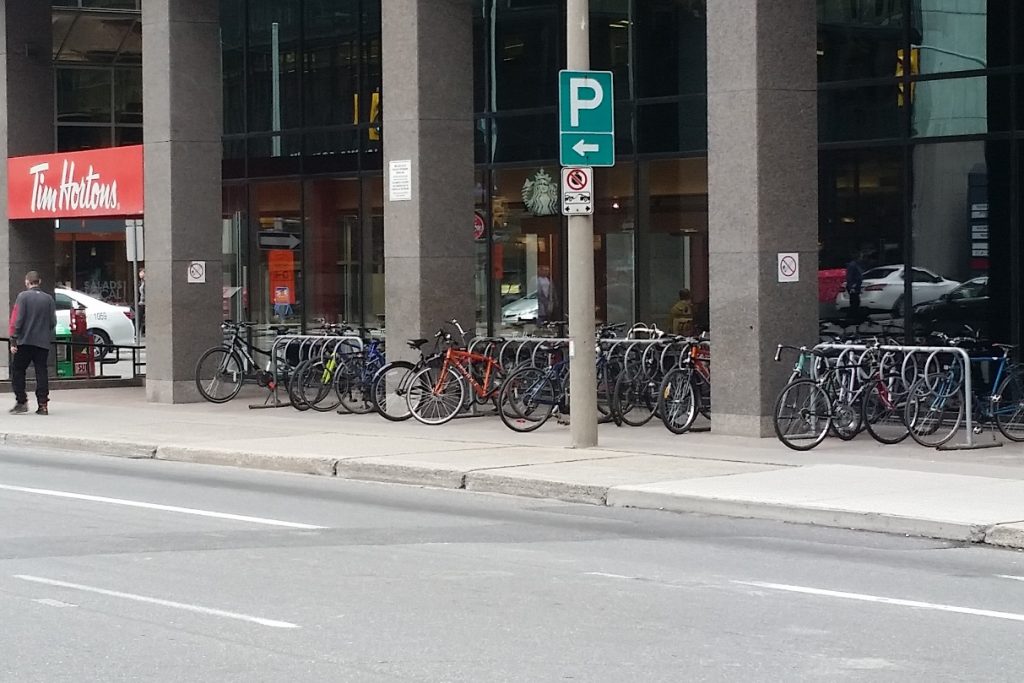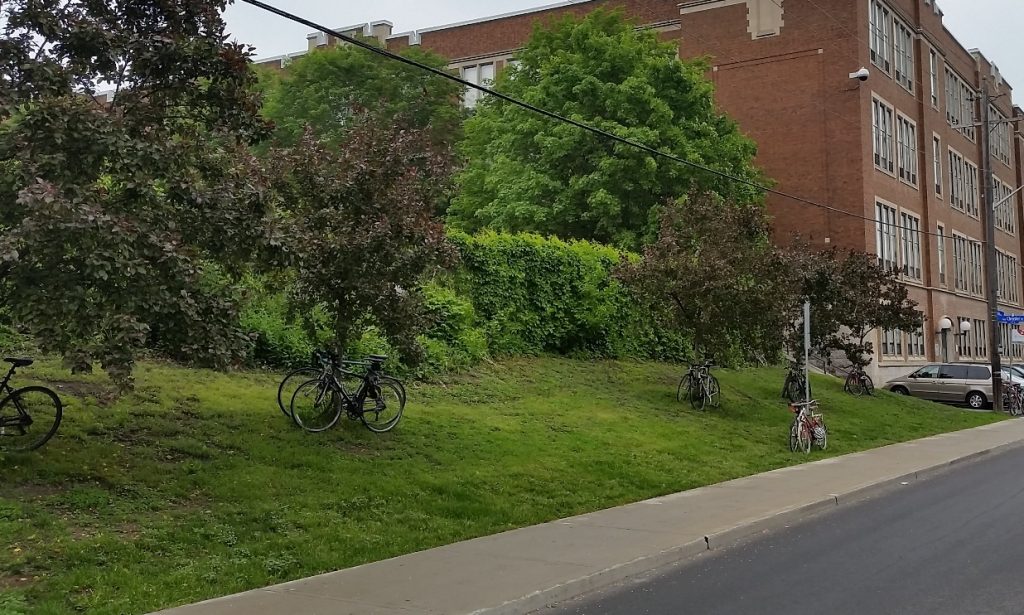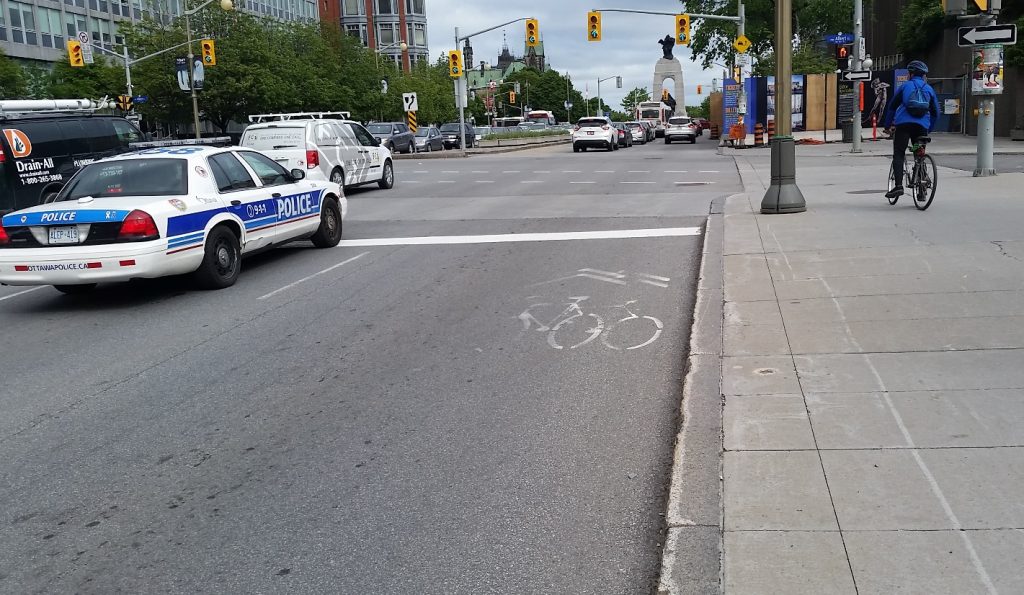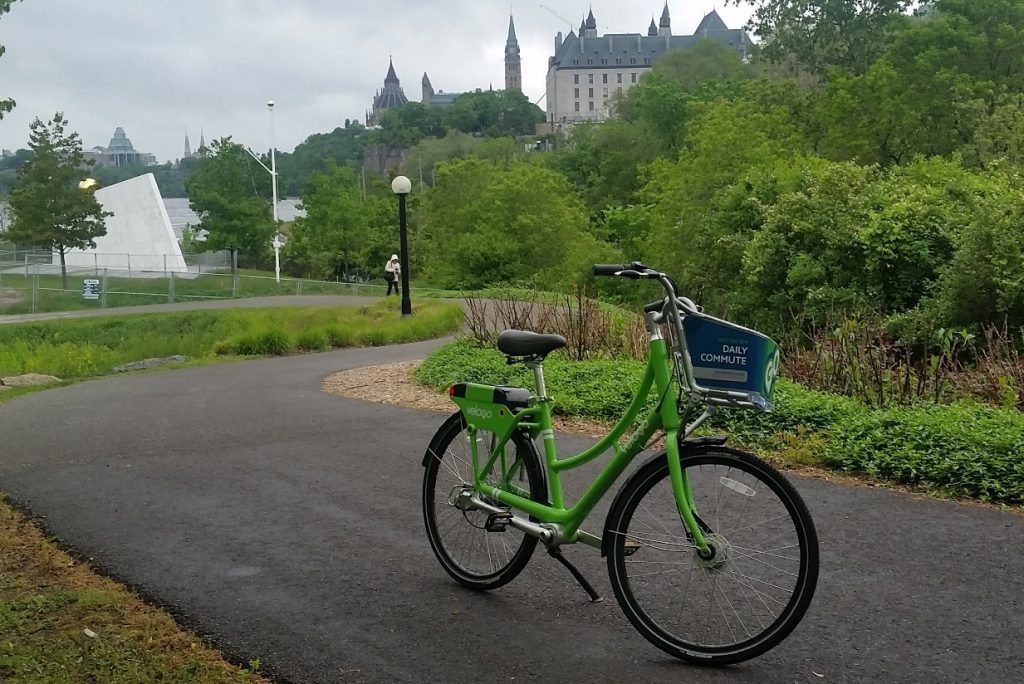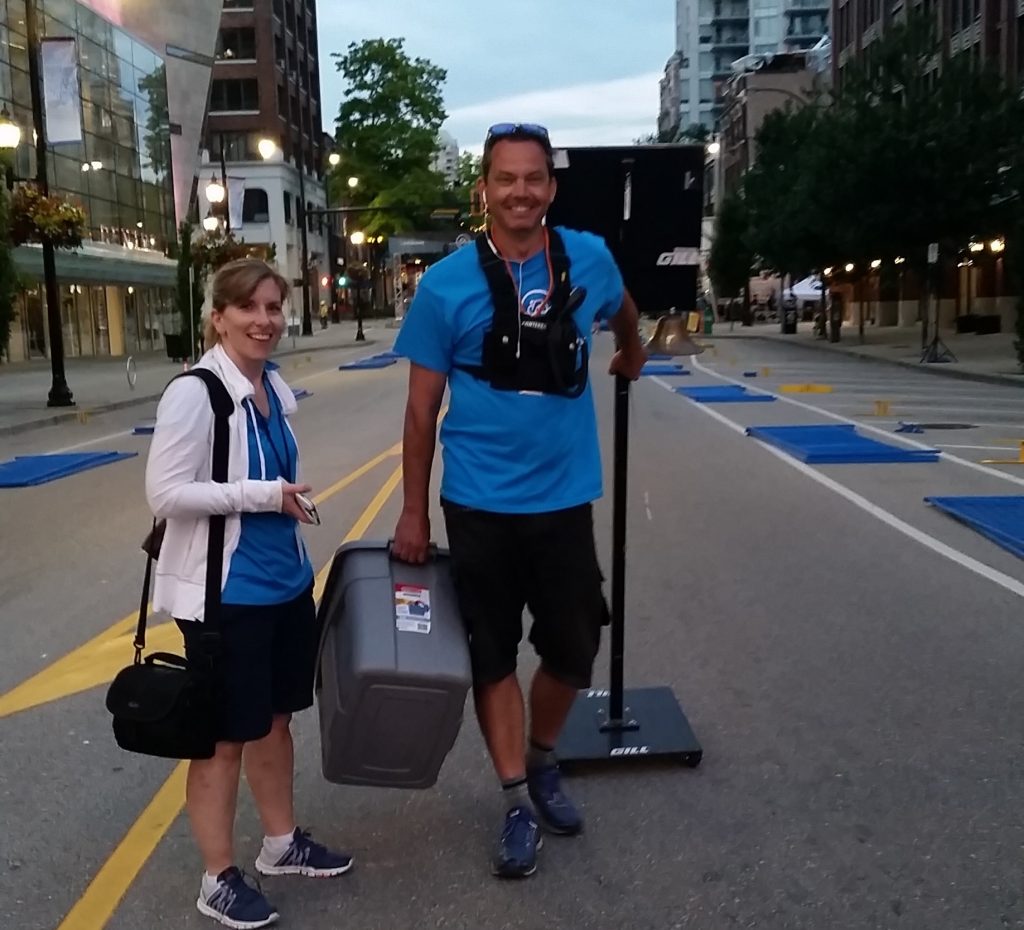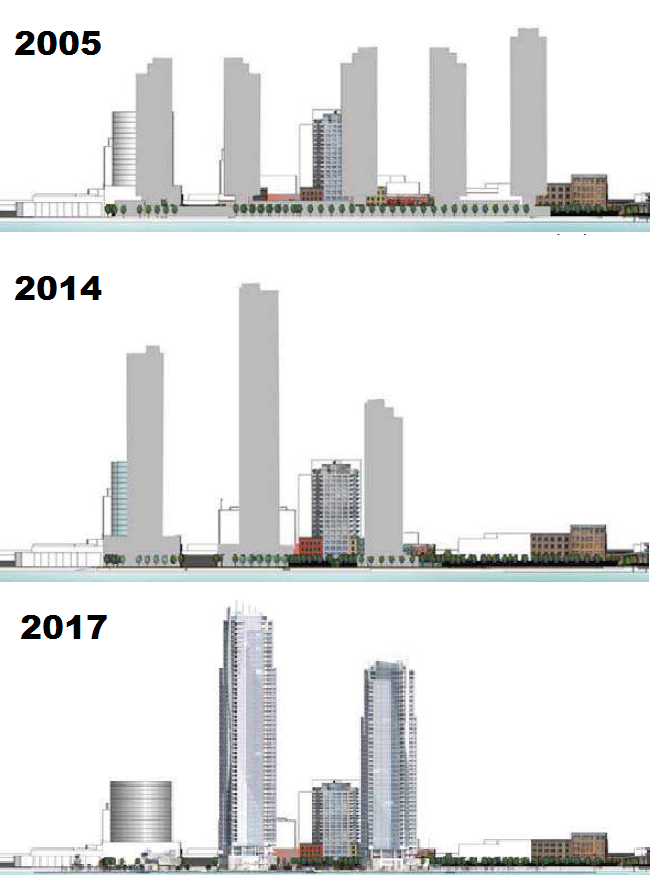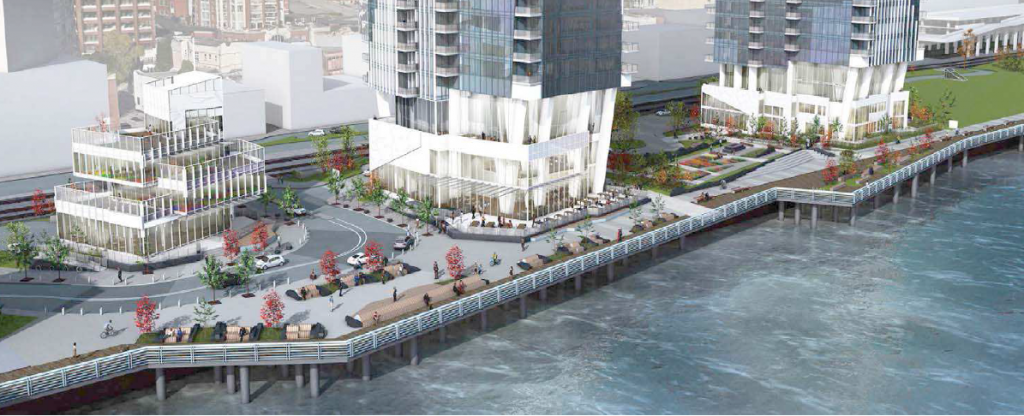The final Council meeting before the summer break occurred on July 10. We don’t meet again until the end of August, which is a bit of a relief as there is so much going on in New West this summer, it will be nice to be able to enjoy my annual summer stay-cation. But first, the work. Our Agenda started with a presentation on progress on a big development project:
Sapperton Green (97 Braid Street): Master Plan Update
Sapperton Green is a big project. A 38-acre site sitting right on a Skytrain Station adjacent to Highway 1. The Official Community Plan for the property includes 3,700 homes for something like 7,500 residents, 150,000sq.ft. of retail commercial space, and up to 1,500,000sq.ft. of office commercial space. There will be a mix of building types, including about a dozen towers up to 35 stories.
A project this size (the first of this scale since Victoria Hill) takes a lot of planning and development work. The Official Community Plan Amendment, adopted in 2015, was the first high-level step, where the numbers above around square feet and land use types were determined. The next step is to perform a Master Planning process, which is where the project is now. This is the step where big decisions are made about the layout of the site, where buildings will be and where greenspace will be, what type of community amenity will be provided, and where those amenities will be located. This is also the stage where high-level details about how the ground level of the development will work, with transportation connections and parks.
There is a lot of work to do yet before we start seeing shovels in the ground here ,and there will be more public consultation, however today’s report was mostly for staff to get endorsement from Council on some of the “big principles” defining the shape and form of the development (listed in part 6 of the report).
This project differs from Victoria Hill in two ways: it is a mixed use community instead of a predominantly residential neighbourhood, and it needs to be a permeable site for pedestrians especially, because it will be located between Sapperton and a SkyTrain station, and will become a commercial centre and will have amenities servicing Sapperton as much as its own residents. In that sense, we need to think of how its connections integrate with the surrounding community in a different way than Victoria Hill.
There are some concerns about what this project means to the district’s school capital development plans, especially at the Elementary and Middle School stages, but there is some time for the School District and the Province to manage those long-term plans. The population growth anticipated here is completely consistent with the Official Community Plans back to the late 1990s, and with the Regional Growth Strategy, so it should be no surprise to anyone involved in long-term regional planning. The population is coming, what we need to provide now is some more certainty about timing and distribution of new residential development.
The following items were Moved on Consent:
Proposed Derwent Way Soil Transfer Facility
This project on Port Metro Vancouver land in Queensborough is going through a similar type of Port-driven environmental review as the Fraser Surrey Docks coal terminal project. As such, the City being asked to opine on the project as it will have impacts on City roads, drainage, and land use.
The basics of the project is that a company wants to use a piece of Port land adjacent to the Derwent bridge to transfer soils from trucks to barges so it can be shipped upriver to a storage/processing facility. These soils will include contaminated soils from development, but not soils deemed as “hazardous waste”. This is a bit technical (and within my area of professional practice) so maybe I will explore it a bit more in a future blog post.
The neighbourhood is going to have a reaction to contaminated soils being stored next door, but our staff have appropriately identified impacts we should be concerned about – how the increase in trucks impacts neighbourhood livability, how dust and vapours will be managed on site, and how site drainage will be managed. If you are a concerned citizen with opinions, you can take part in the review by following this link.
914 Thirteenth Street: Heritage Alteration Permit No. 106 for Work on Designated Heritage Property – Request for Issuance
This heritage house in the West End is Designated, meaning it is a protected heritage asset. The owners wish to make some changes to the house to improve livability, and because it is Designated, require a Heritage Alteration Permit to assure the heritage values of the house are protected. Council moved to approve this permit.
Walk New West Initiative – Update
This was an information report, following up on this spring’s walking advocacy initiative. It was a good program, and relied heavily on the support of a burgeoning Pedestrian Advocacy group that had formed in the City (The Walkers Caucus). The “challenge” part of the program was perhaps a little long and a little complicated, but most participants enjoyed it, and for a first year, it was a great launch. I look forward to 2018, and to more activity by the Walkers Caucus speaking up for the needs of pedestrians in our City and the region.
Latecomer Agreement for Extended Servicing Costs Related to the Subdivision of 1004 Salter Street
This may be a little too “inside baseball” for some, but let me try to summarize, because understanding this is a pathway to understanding how growing cities get developers to pay for utilities.
When a developer wants to build a neighbourhood that significantly increases density, it means the City’s utilities need to increase capacity by building new or larger water and sewer lines. The City gets the Developer (and, ultimately, the purchaser and user of the utilities) to pay for these, either by the developer building them, or by collecting Development Cost Charges which hare set aside by the City and are specifically and legally earmarked to pay for the cost of those capital works.
However, sometimes these density increases occur adjacent to other areas where future growth is planned, and the City wants the utilities to be upsized now not just for the current development, but for future development. Why build twice when you can build once? One way to make this happen is to get the developer to build bigger than they currently need, and then recover those extra costs from the next developer who comes along to develop that next adjacent property. To do this, the City sets up a “latecomer” agreement, allowing the City to collect money form that latter developer (when it happens) and give it to the current developer who is paying for the increased utility works installed now.
This report outlines the principles of a proposed Latecomer agreement for a development in Queensborough.
Street Closure Bylaw No. 7935, 2017 – Wood/Boyne Street Animal Services Facility
The City is building a new Animal Services Facility in Queensborough on land we already own, however part of that land is currently designated as a road (although it is forested, and the road doesn’t connect to anything). So by law, we need to officially close the road so it can be repurposed.
Temporary Relocation of Queen’s Park Arenex Gymnastics and Trampoline Programs Update
Our Parks and Recreation staff have been working hard to manage the various aspects of the post-Arenex-collapse plan. We are finalizing work on a short-term replacement structure and integration of some programming with the proposed Canada Games Pool replacement, but there has also been a lot of work finding solutions to the programs that have been displaced by the Arenex collapse so they can maintain continuity. This information report provides a bit of detail about the hardest-to-house programs, as the trampoline programs especially require pretty specific spaces. This is an ongoing work in progress, and will be until the temporary replacement is brought on line. Hopefully, there will be more news on that shortly.
800 Columbia Street (CPR Station Site): Rezoning to Allow Liquor Primary Licensed Premise – Preliminary Report
The cat is out of the bag about the restaurant operators who plan to open up this Fall in the old CP Station / Keg Building at the foot of Eighth Street. This rezoning application will allow the proponents to operate both a “food primary” restaurant and a “liquor Primary” pub in the same building. As this is a rezoning, it will go to public consultation, including a Public Hearing, so I’ll hold off my comments until then.
The following items were Removed form Consent for discussion:
232 Lawrence Street (Child Care Facility): Official Community Plan Amendment Section 475 and 476 – Consultation Report
232 Lawrence Street (Child Care Facility): Grant Funding Update
There are two things going on here, both related to the re-purposing a piece of City land in Queensborough to host a critically needed child care facility in that community. The first is a report on consultation for the required OCP amendment and zoning changes (local government sausage-making), and the second is about the City’s budget for this project.
There was quite a bit of discussion about the second point. The City is planning to tap into some Provincial Grants available to fund the capital investment required to build the space, and will use a not-for-profit to operate the facility. However, we need ot dedicate some capital budget to make both of these things happen. The extra money the City is putting up comes from the General Amenity Reserve – money collected from developers to increase density in order to provide exactly these kinds of amenities, and I am satisfied that this is an appropriate use of those finds, especially in light of the opportunity to leverage 4x the amount we invest from senior governments, and that child care is the #1 amenity priority for the Queensborough neighbourhood.
701 Sixth Street (Glenbrooke Daycare Society): Request for Financial Assistance
This is the other side of the coin. There are several child care facilities in the City struggling to pay the bills and keep services affordable, and capital costs for expansion are a challenge for them all. The City has a reserve fund for childcare, and a staff committee who determines the best use of these funds. It hurts to not be able to say Yes to every request, but I respect staff’s recommendation about how to best use limited funds to have the bidggest impact, and this application doesn’t seem to meet that test.
Construction Noise Bylaw: Proposed Changes to Permitted Hours and Pile Driving Technologies – For Consideration
This update to our construction Noise Bylaw will reducing pile driving hours on Saturdays, and look towards methods to encourage quieter and less disruptive pile technology. The first is something some other Lower Mainland communities do, and this brings us more in line with regional standards. The second is something other Cities don’t currently do, so New West is once again launching off into uncharted territory in the livability front.
The pile technology used for River Sky downtown was pretty traditional: diesel impact. It is also the noisiest. Essentially using an un-muffled diesel explosion to drive the hammer. Other technologies have strengths and weaknesses: vibratory hammers are much quieter, but may not be appropriate near heritage structures because there is some potential the vibrations can weaken older adjacent foundations. Drilled piles and rotary techniques are also quieter, but are more expensive, and may not work reliably depending on the type of geology you are drilling into.
The request to staff here was to bring back a more detailed report on strengths and weaknesses of the technologies, and to give us some guidance on what our abilities are as a local government to either demand a certain technology use (or, more likely, a desired outcome as far as noise and intrusion), or to incentivize less impactful techonology. Are we limited by building codes or higher government standards? What is our negotiating ability here with larger developments? Or do we need to rely on the neighbourliness of Developers (like the approach Bosa Developments have taken for the new development on the waterfront). More to come…
Passive Design Exclusions for Low-Rise Residential Zones
We want to encourage people to build more efficient homes, or upgrade the efficiency of their existing homes, but however unintentionally some zoning rules act against this. More efficient homes to the PassivHaus level often have much thicker walls, floors and ceilings. If we count square footage by the outside walls, then wall thickness comes at expense of floor space. Similarly when we limit the peak height of houses. Staff has some creative suggestions to fix this mixed message. Council agreed. Staff will work on the Bylaw amendments.
Public Water Station Installations
Public fountains are coming back into vogue as we build a more walkable city with more active public spaces. Can public bathrooms be far behind?
Centennial Lodge Renovations
Some suggested changes to the Centennial Lodge are being put on the back burner due to some shift in the operations on site resulting in less use conflict. Good news is we save a bit of money from our Capital budget. By the way, the Art Gallery at Centennial has a refreshed look – new floors and paint, and it looks nice. You should drop by an see what they have going on.
New Westminster Urban Solar Garden Pilot Project Update
This is a pretty cool program that New Westminster is uniquely able to operate, partly because we own our own electrical utility. Following the lead of equally-advantaged Nelson, BC, we are launching a Solar Garden program where you can purchase a share in a solar panel array, then receive the benefit of the electricity it produces.
A challenge to installing your own photovoltaics at home is beyond the cost of the panels, but the cost of installation engineering, electrical converters, meters, wiring, and maintenance of the above. If a bunch of panels are installed together, those costs are shared and the entire operation is more efficient. Through a Solar Garden, you can buy a panel at our Public Works Yard, and our electrical utility operates it. You pay a buy-in cost, then the power your panel produces is subtracted from your monthly electricity bill.
There will be a public Open House to outline the idea next week. Show up and see if a Solar Array is right for you!
Advisory Committee for Transit, Bicycles and Pedestrians (ACTBiPed): Implications of New Westminster Hosting a Walk21 Conference
I was unfortunately unable to attend the ACTBIPed meeting from which this arose, but am intrigued about the Walk21 Conference. It was held in Vancouver a few years ago and member of this Council and some other sustainable transportation advocates in the community attended and found it an inspiring and education experience.
I support this motion from ACTBiPed that we should explore hosting the conference in future year, but added to it that we ask staff to also consider partnering with an adjacent community in hosting. This may be an opportunity for New West and Burnaby or Surrey to work together on some of our common sustainable transportation goals.
These items were Late Additions, to the Agenda:
Arenex Facility Investigation Report
This report by independent structural engineers reviewed the likely causes of the Arenex roof collapse. It is an interesting read, but the short version is that there is no single cause that could be identified. The roof snow load was not as big as in some previous years, and there were no signs ahead of time of structural problems. Potentially, repeated stress cycles over 80 years exacerbated an undetected flaw in the ceiling beam that failed, and the final snow load was the straw that broke the camel’s back. Ultimately, it was unanticipated, and most likely impossible to predict until the night it started to creak and the building was evacuated.
Status of tree Bylaw Amendments
The Tree Bylaw introduced back in 2016 is not without its teething problems. In the year after adoption, there were 295 applications processed under the Bylaw, 466 trees authorized for removal and 653 replacement trees planted. 47 hazardous trees were removed by permit and more than 300 trees that may have been lost were retained (including 46 “specimen trees”). So as far as protection and increasing the number of trees in the City, the Bylaw is working. As far as smooth and timely execution of the permitting process, we still have a bit to go. At this point, there is a real process backlog which means we are not hitting reasonable standards for customer service.
That said, we did make a commitment to review the Bylaw within the first two years to look at improvements or necessary changes. Staff are working on bringing a full report to Council, and I hope we will see something in the Fall. In the meantime, we are working on staff resourcing to fix the backlog problem.
We then wrapped out meeting, as per usual, by rolling through our Bylaws:
Wood-Boyne Street Road Closure Bylaw No. 7935, 2017
As described above, this Bylaw that results in the official closure of a portion of Wood street in Queensborough so the Animal Shelter can be built upon was given three readings.
Cultural Services Fees and Charges Amendment Bylaw No. 7931, 2017
As discussed at the May 15 Meeting, this Bylaw that adjusts the rates for studio space at the Anvil Centre was adopted. It’s the law of the land, adjust your dance card appropriately.
Sign Bylaw No. 7867, 2017
Bylaw Notice Enforcement Amendment Bylaw No. 7921, 2017
As also discussed at the May 15 Meeting, this update to our Sign Bylaw was adopted by Council. Long-haired Freaky People need not apply.
Zoning Amendment (602 Ewen Avenue) No. 7840, 2016
This Bylaw amendment supporting the 16-unit townhouse development in Queensborough was Adopted by Council.
Zoning Amendment Bylaw (430 Duncan Street) No. 7796, 2015
The Bylaw that came to Public Hearing back in November of 2015 is finally ready to be adopted by Council, which we did.
And except for a few announcements, that was the end of the TV run for New Westminster Council. Have a good summer.
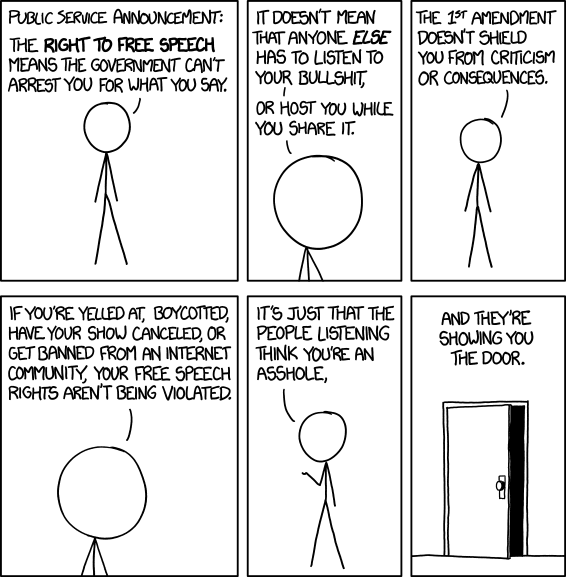
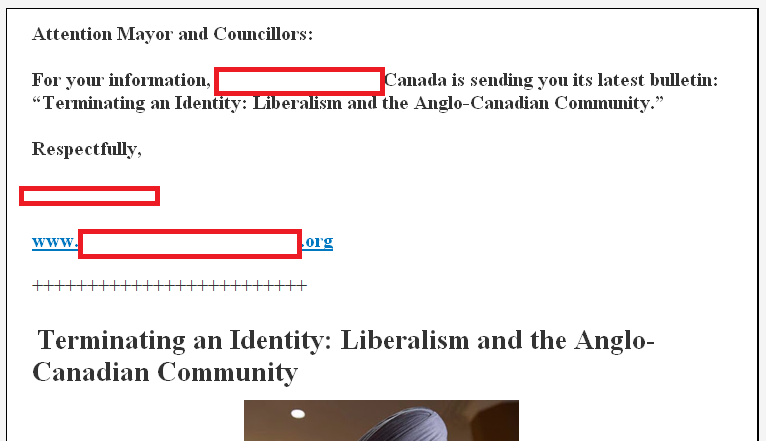
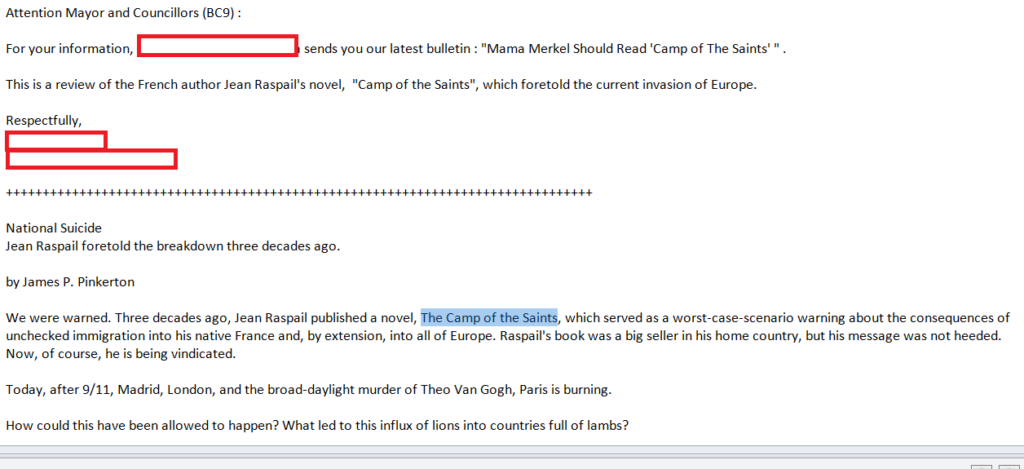
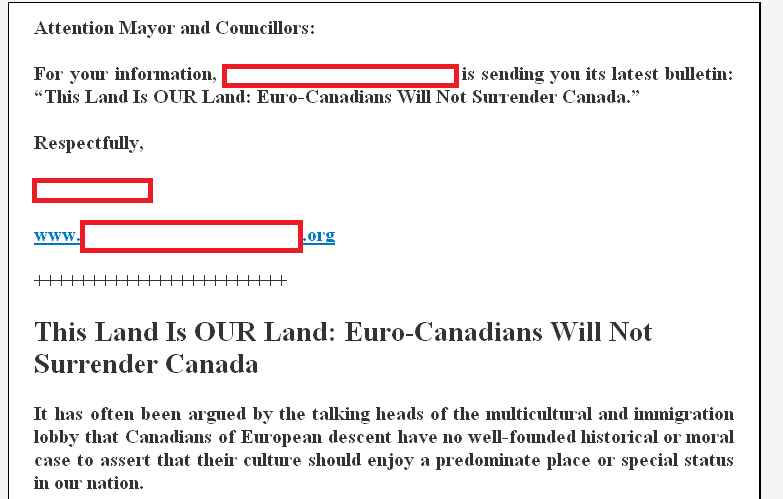



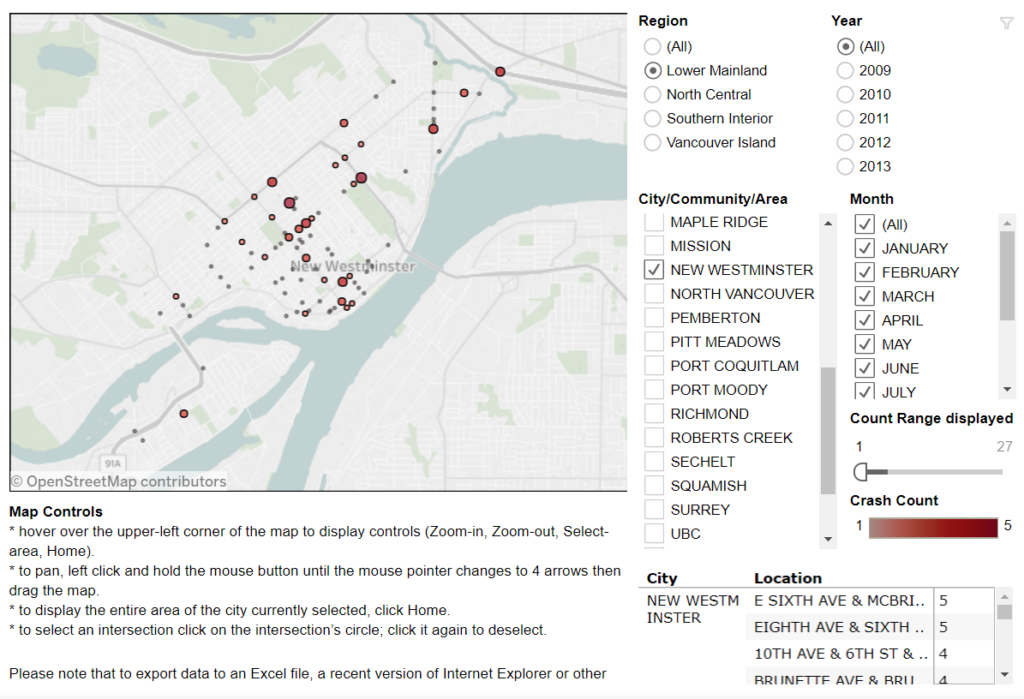
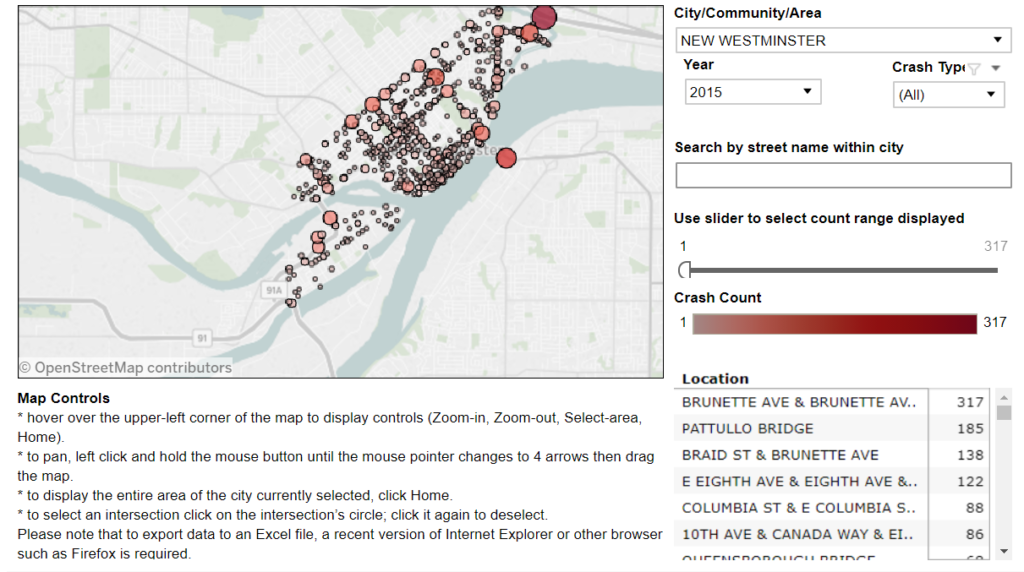
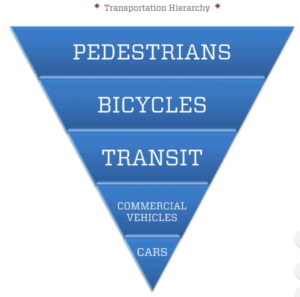
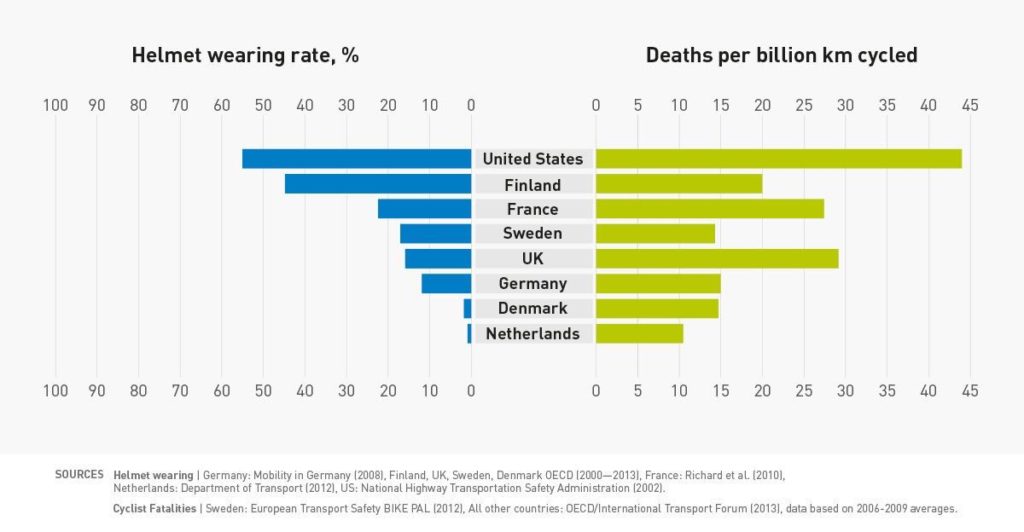 The Crosstown Greenway improvements are very small part of our transportation budget (less than 3% of this year’s budget for road improvements), and has numerous potential benefits to the community at large. As the City’s first foray into modern separated bikeway design, it may have a few kinks to work out, and it may take a bit of time for drivers to get their head around the new layout, but it is based on
The Crosstown Greenway improvements are very small part of our transportation budget (less than 3% of this year’s budget for road improvements), and has numerous potential benefits to the community at large. As the City’s first foray into modern separated bikeway design, it may have a few kinks to work out, and it may take a bit of time for drivers to get their head around the new layout, but it is based on 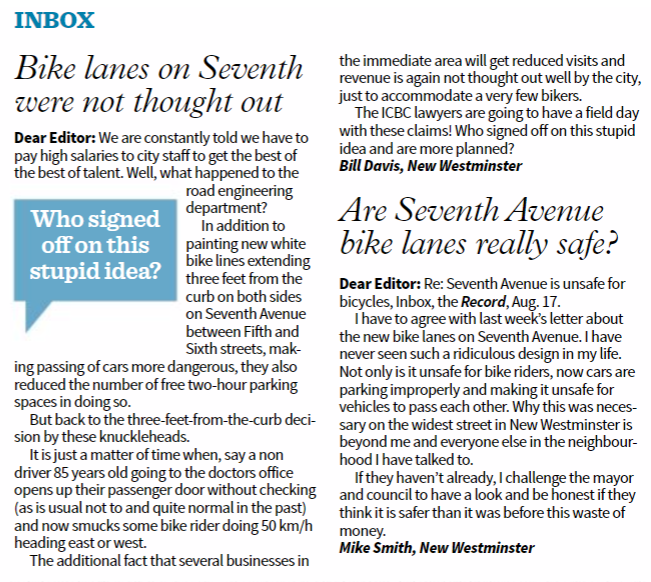
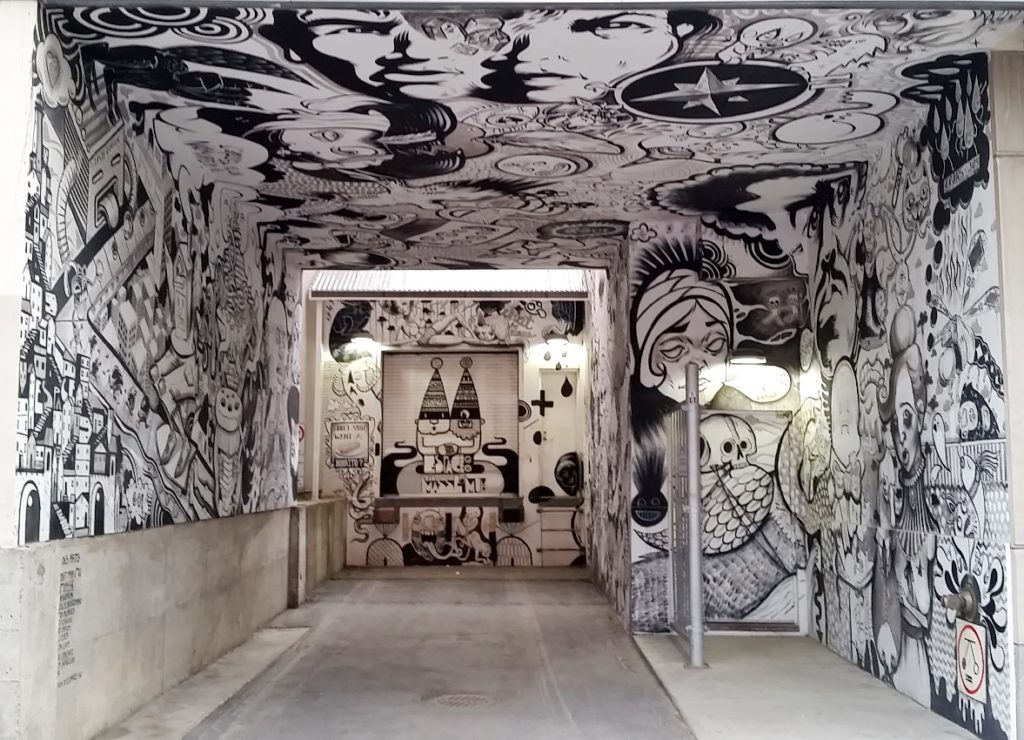
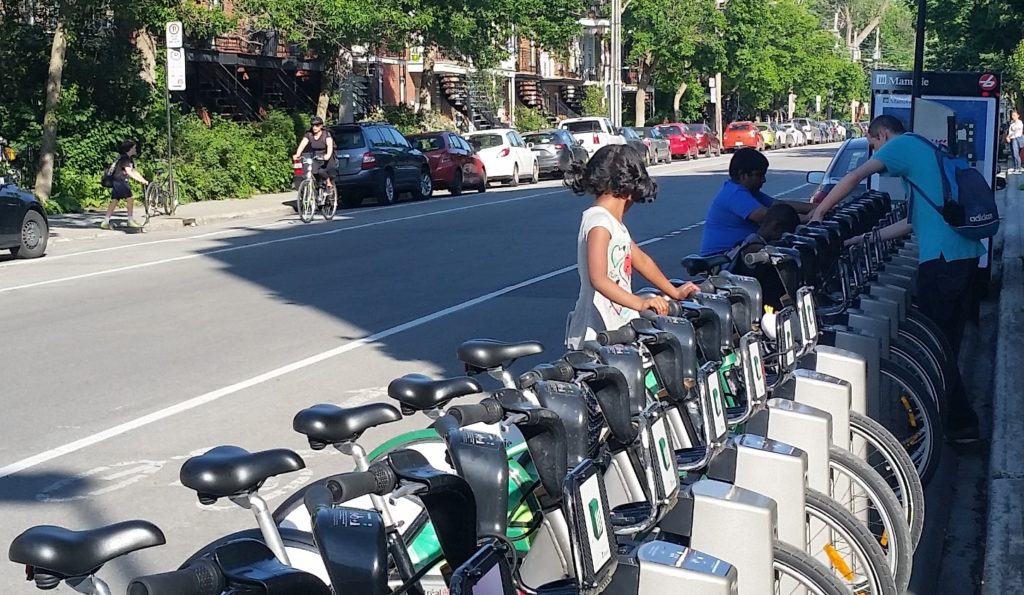
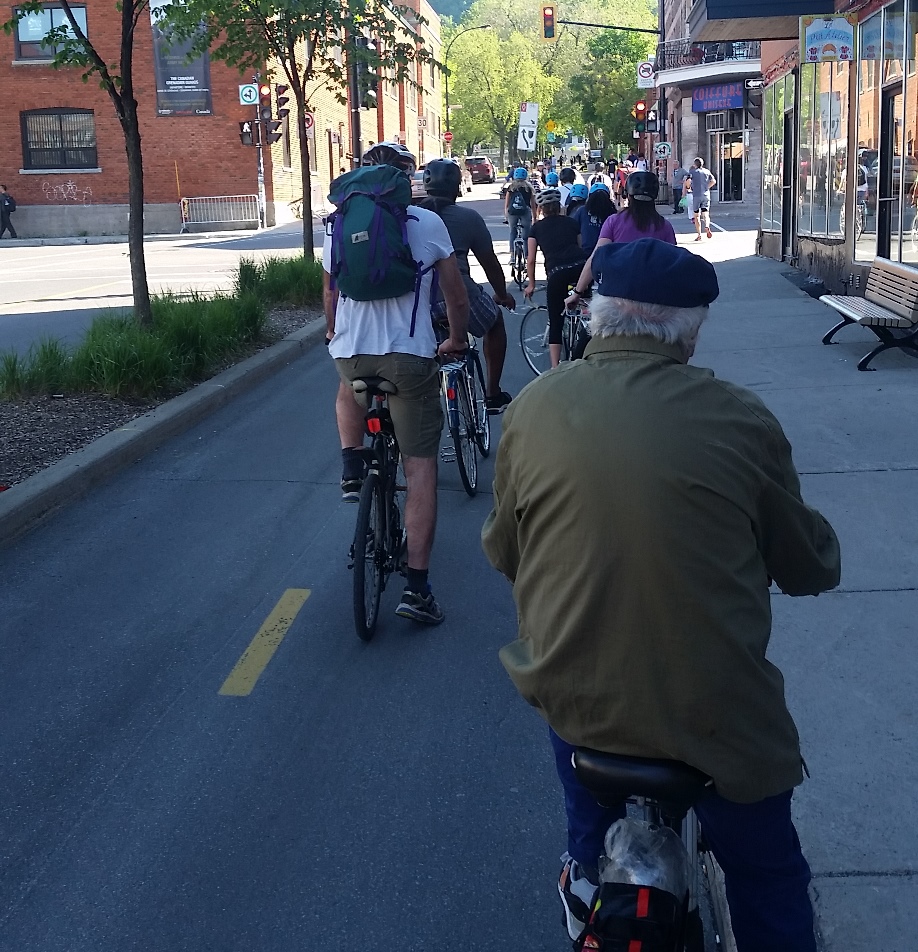
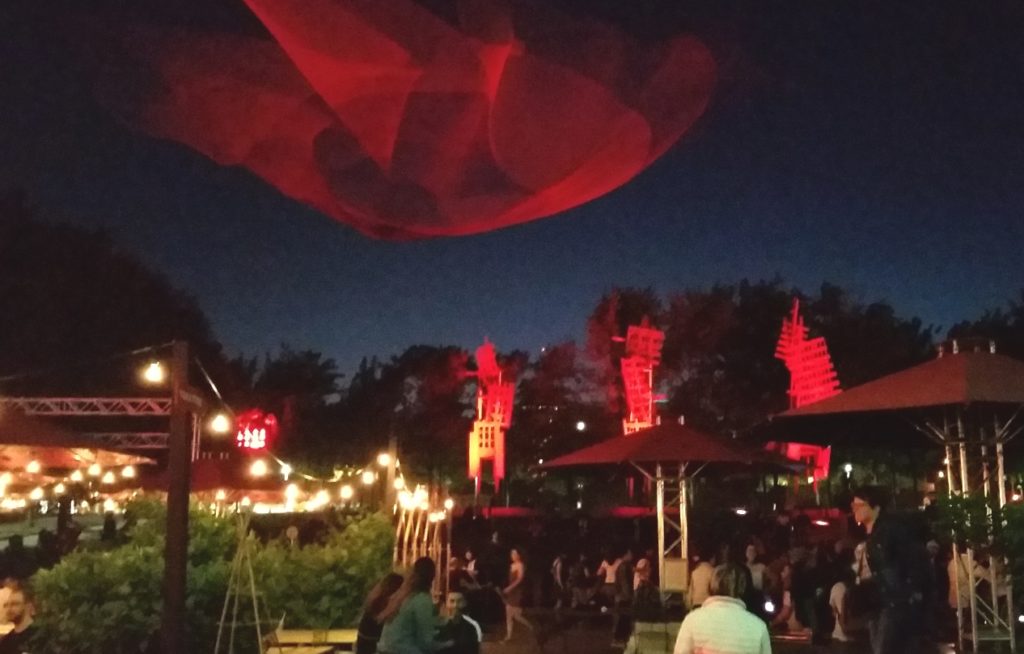
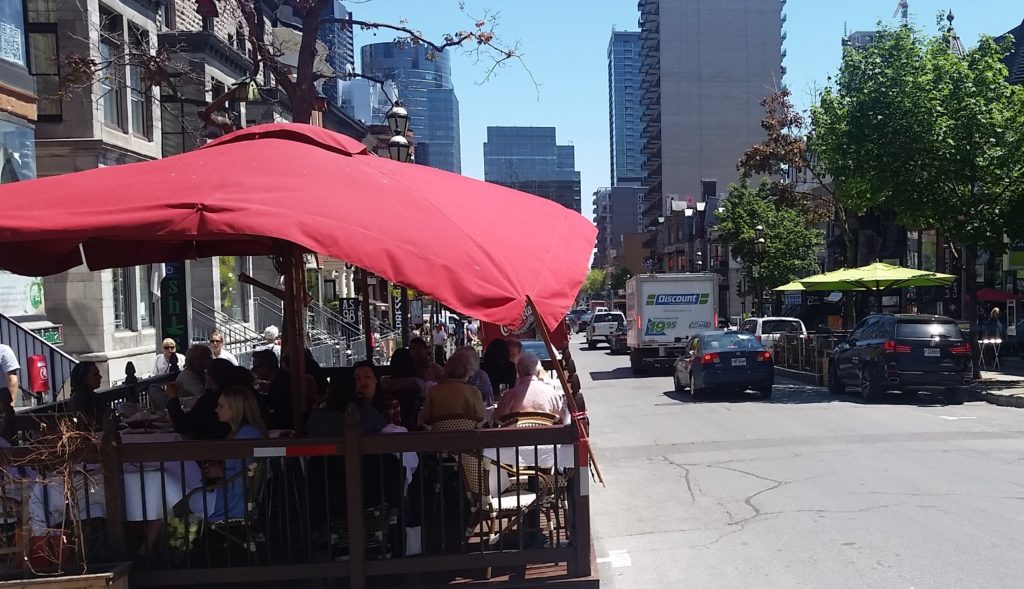
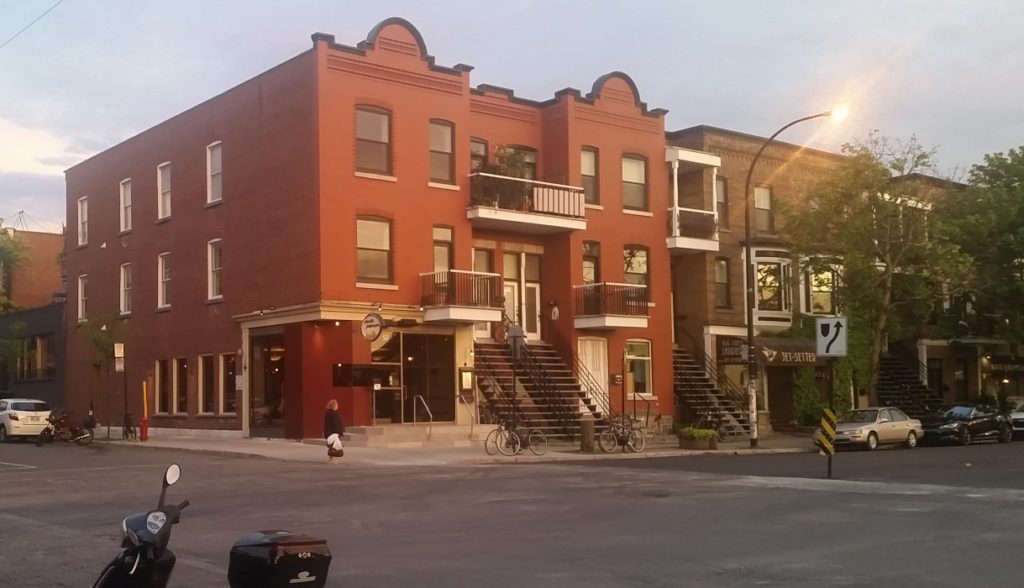
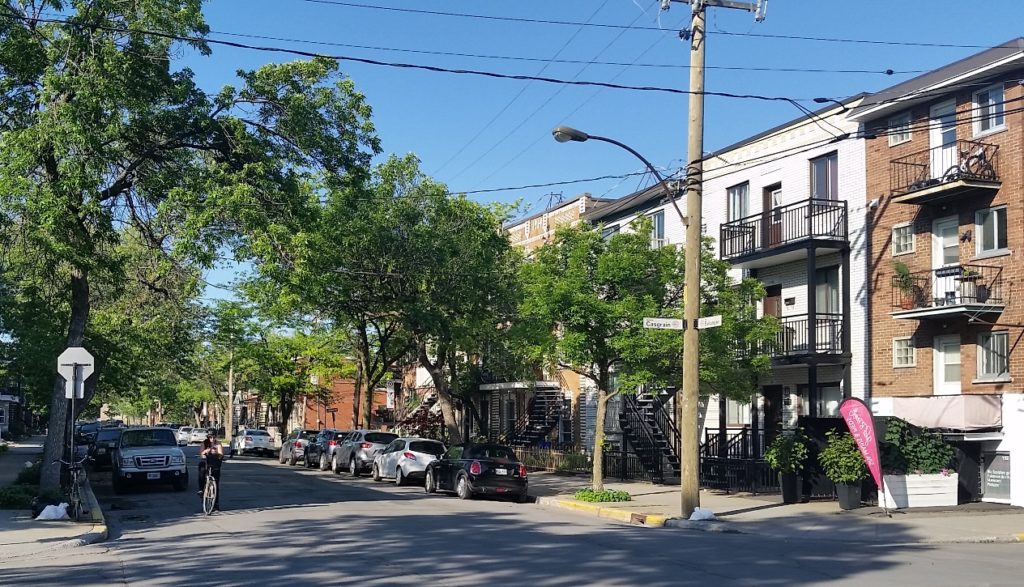
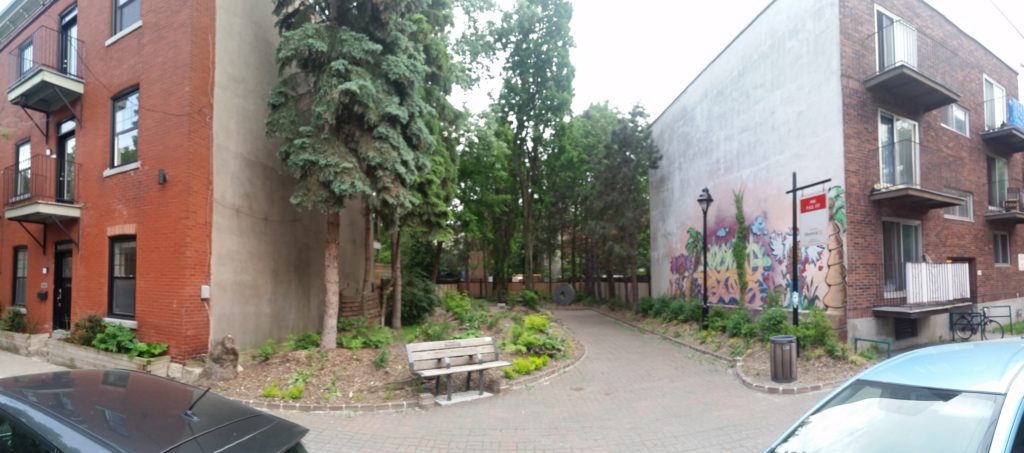
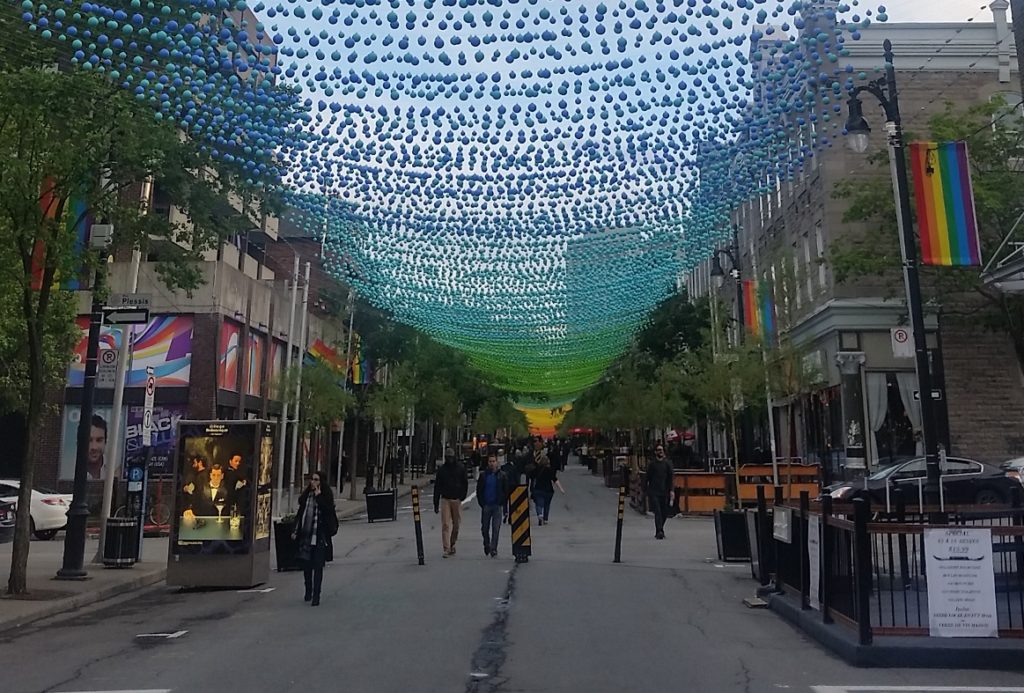
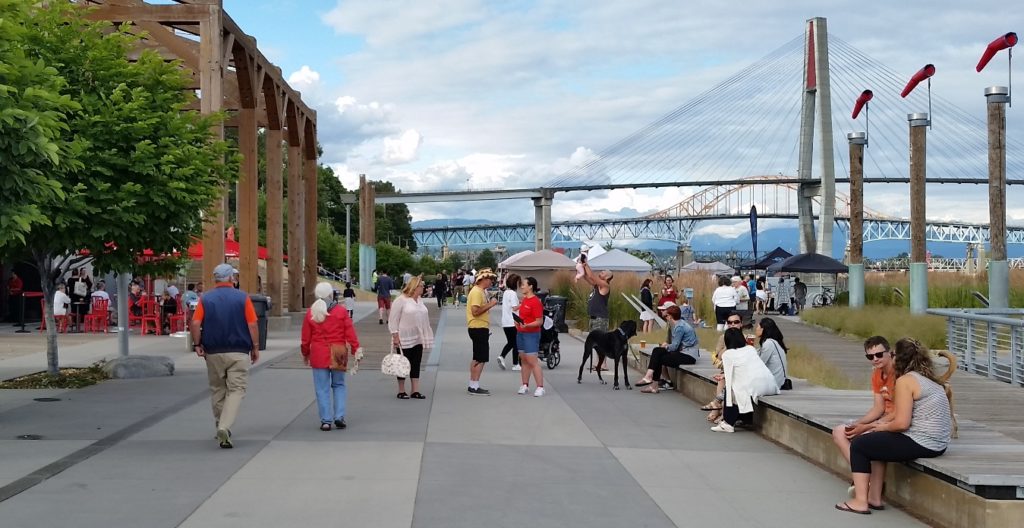
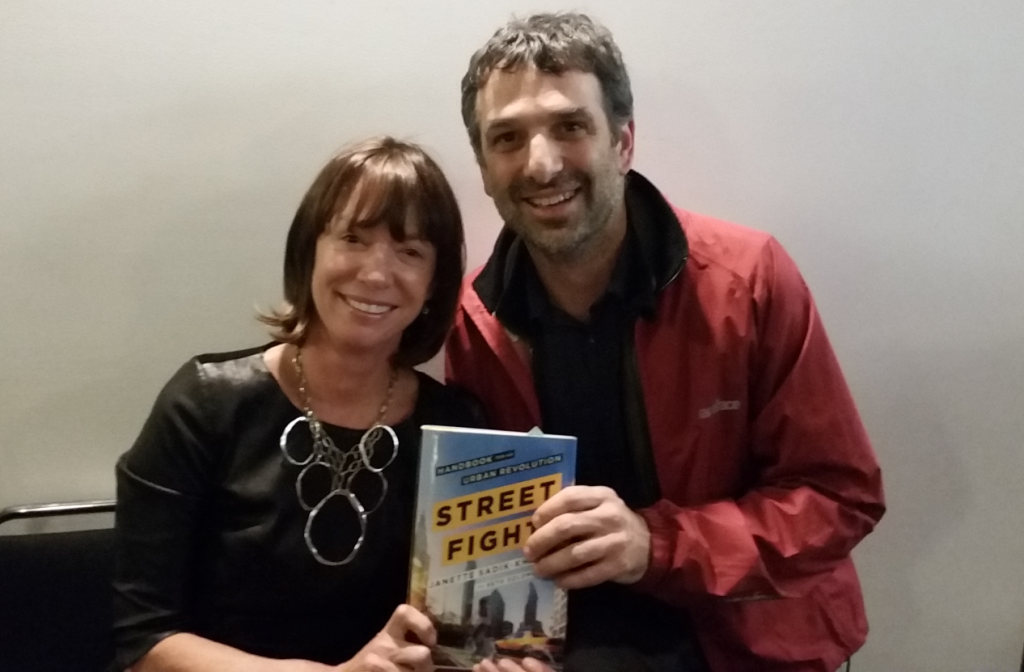
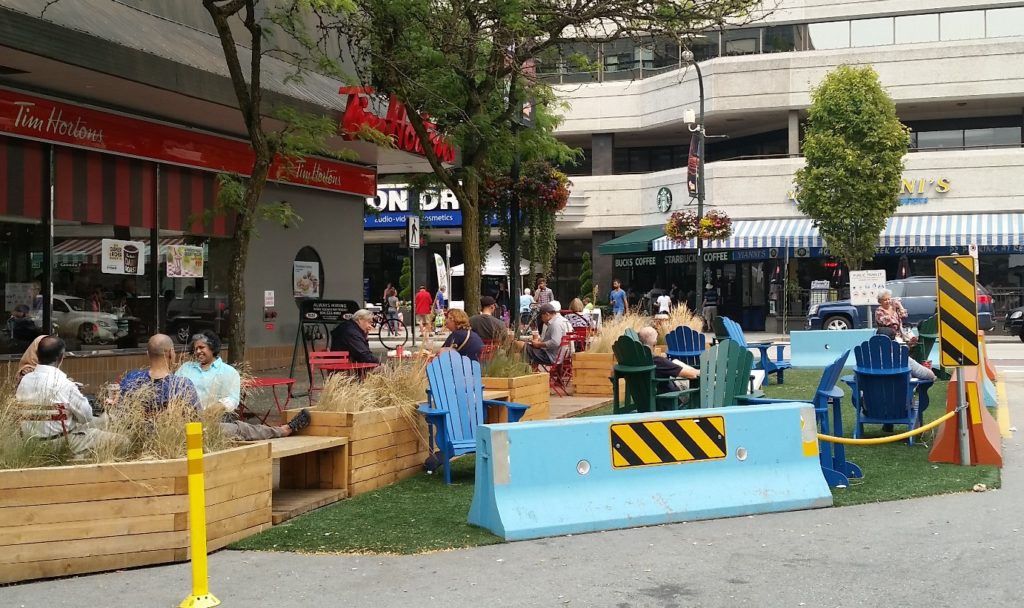

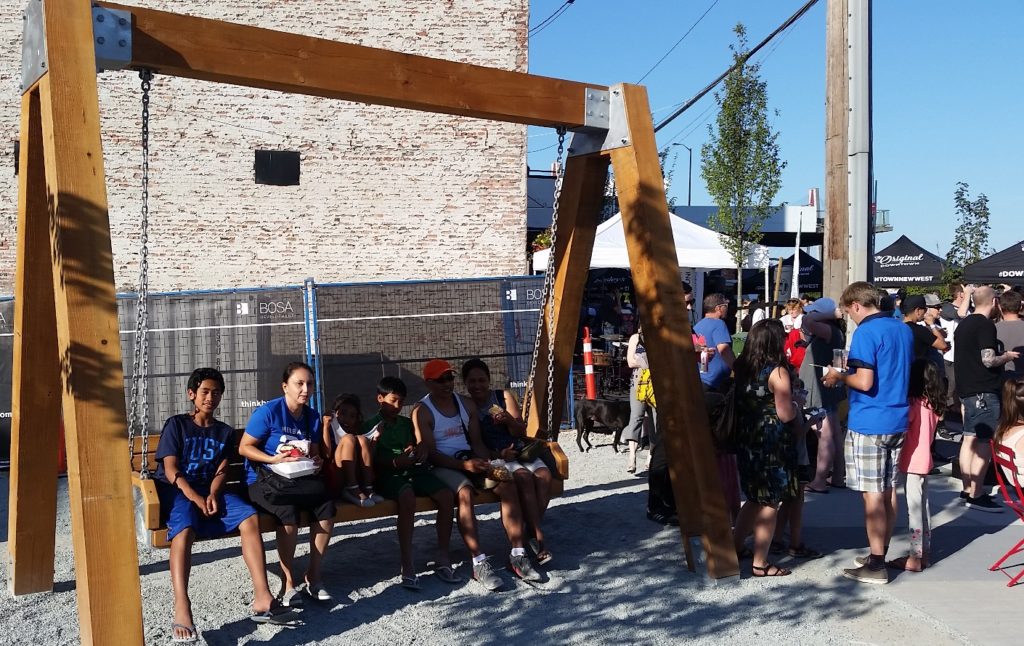
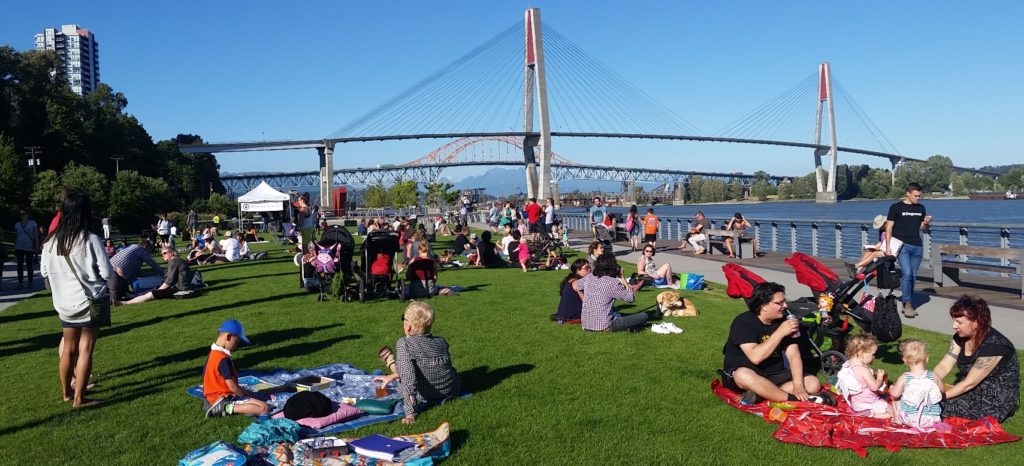
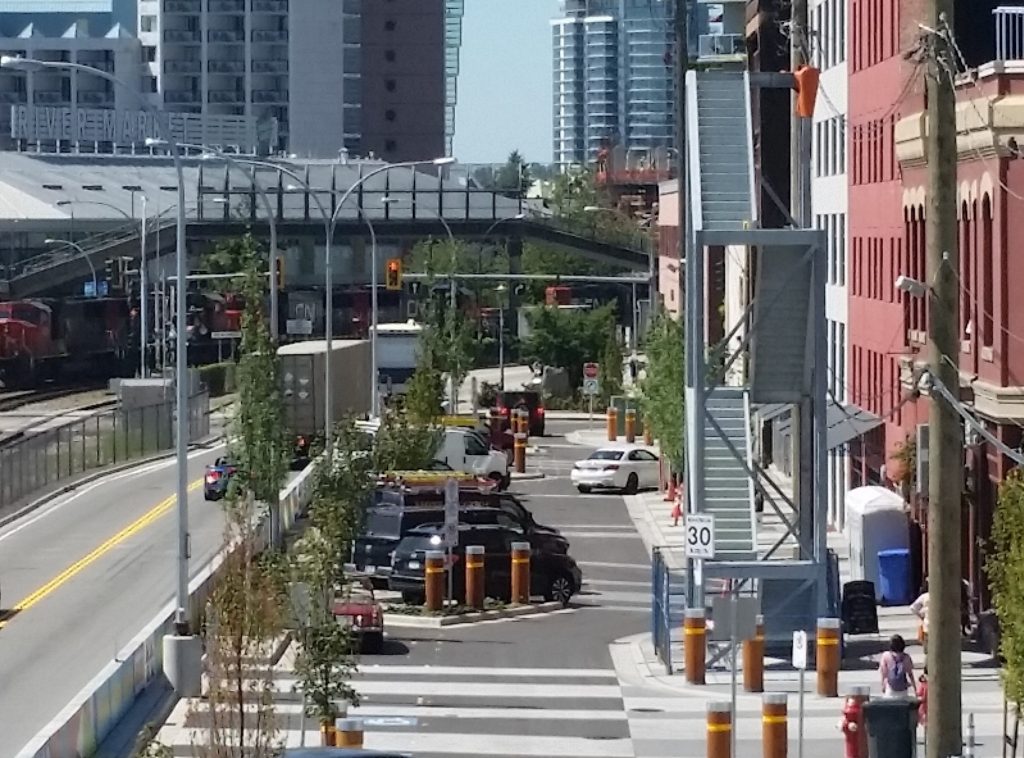
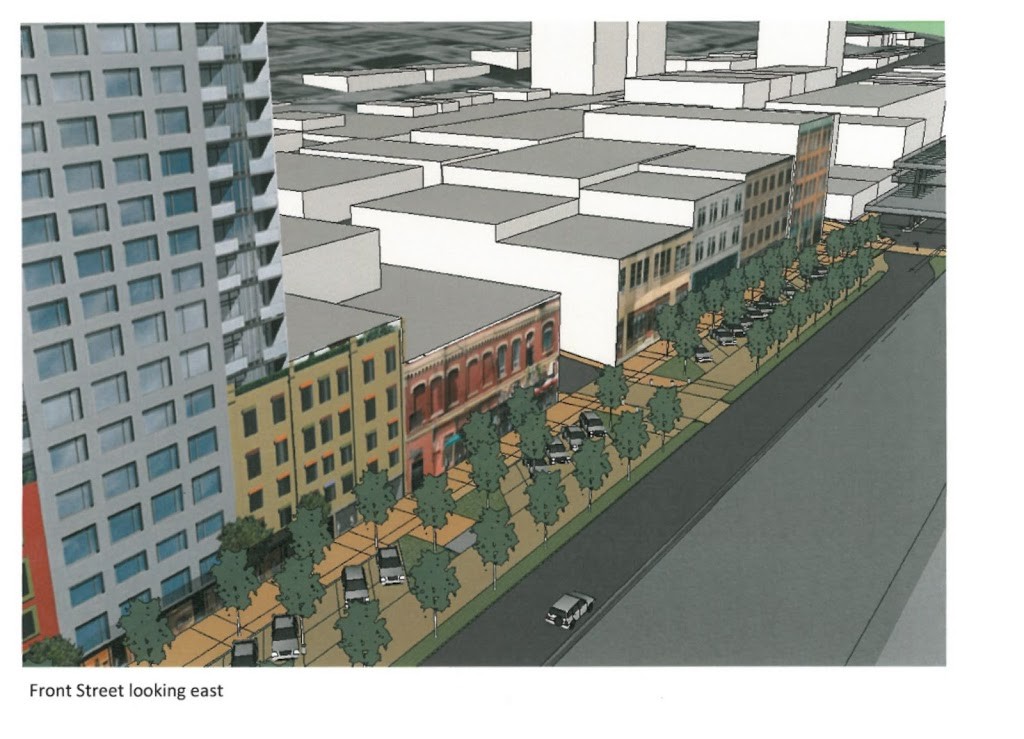 My first reaction was to think that a fire escape, by its very nature, would be used by a half-dozen people only once, if at all. This structure looks like it was engineered to facilitate the boarding of troops onto naval vessels. However, I am told that modern fire access standards for commercial buildings expect that well-equipped firefighters will use the stairs, and carry large things up and down them with some significant urgency. The stairs are also expected to remain standing after a seismic event that no ~100-year-old heritage building was built to sustain. So it is bigger, stronger, and with a much more substantial foundation than the stairs going (for example) up to the back deck in my house. It is also a modular design that can be picked up and moved, as it was recognized at the time as a “temporary” structure, which can be utilized elsewhere if ever major renovations to the ~100-year-old heritage building make the stairway’s presence on Front Street no longer necessary. Put these factors together, and the design, fabrication and installation costs are more than my aforementioned deck stairs.
My first reaction was to think that a fire escape, by its very nature, would be used by a half-dozen people only once, if at all. This structure looks like it was engineered to facilitate the boarding of troops onto naval vessels. However, I am told that modern fire access standards for commercial buildings expect that well-equipped firefighters will use the stairs, and carry large things up and down them with some significant urgency. The stairs are also expected to remain standing after a seismic event that no ~100-year-old heritage building was built to sustain. So it is bigger, stronger, and with a much more substantial foundation than the stairs going (for example) up to the back deck in my house. It is also a modular design that can be picked up and moved, as it was recognized at the time as a “temporary” structure, which can be utilized elsewhere if ever major renovations to the ~100-year-old heritage building make the stairway’s presence on Front Street no longer necessary. Put these factors together, and the design, fabrication and installation costs are more than my aforementioned deck stairs.